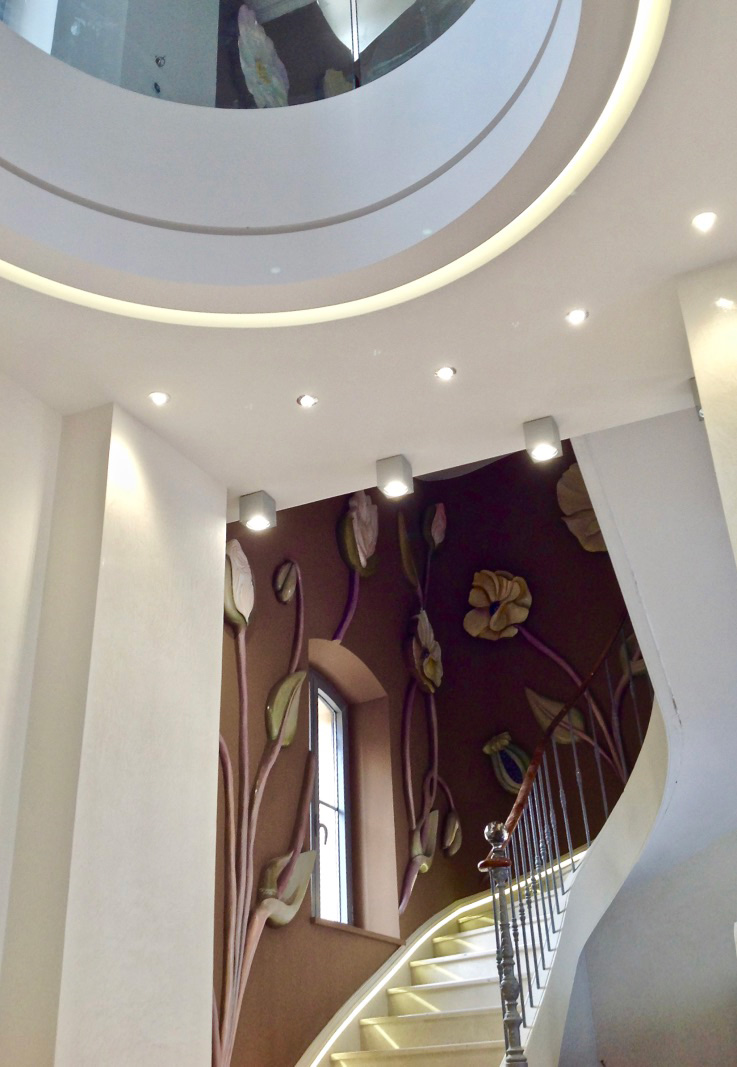Régis Goldberg
“Plaster is a magical material”
By Tanja Stojanov





Meilleur Ouvrier de France (Best Craftsman in France), this ornamental plasterer enjoys restoring and creating decorative sculptures for façades, walls, and ceilings – a job requiring patience and exceptional skills.
The light at Régis Goldberg’s Atelier Staff Passion in Cagnes-sur-Mer lends the ivory-white plasterwork pieces a captivating aura. The studio bursts with sculpted figures and animals, mirrors decorated with flowers, cornice pieces, columns, pilasters, and vaults, not forgetting the moulds used to make these wonders. “I was 13 when someone first told me about the ornamental plastering trade. My father said, ‘These guys do ceilings, you know. You’ll be working with your hands in plaster. It’s a tough job. But I got excited about it, and that’s how I ended up training at Lycée du Gué in Tresmes, Seine-et-Marne. You’ll find ornamental plasterers predominantly in three regions: around Paris, Lyon, and here at home! enthuses Régis Goldberg, who has been at the helm for 40 years. Dressing architecture here is more like haute couture than mass-market fashion. The idea is to embellish premises and work as much on recreating historical Renaissance or Louis XVI motifs as creating new decorative elements.” With plaster, you can make incredible bespoke décors, and not just for Haussmann-style apartments, because you can use it in highly contemporary variations,” continues the ornamental plasterer, who designed jagged walls for the new Spa at the Hôtel Negresco and has added his touch to several luxury hotels in the region including Château Saint-Martin & Spa in Vence, Hôtel du Cap-Eden-Roc in Antibes and Terre Blanche Hôtel Spa Golf Resort. The relationship with clients is one of long-term trust.
Flowers, plants, and Moorish style
“We can even design a simple plasterwork cover to conceal an air-conditioning pipe – it doesn’t have to be spectacular! jokes Régis, awarded the coveted title of MOF (Meilleur Ouvrier de France) in 2019. Three young ornamental plasterers busy themselves in the atelier alongside him, listening to music while they work, the mood cheerful but focused - drawing models, making casts, and applying layers of jute and plaster with brushes. That’s what ornamental plasterwork is about, a technique invented in 1850 by a certain Monsieur Mézier. It’s a tough job that requires strong support at home and from your team so you can concentrate on what’s important. “He’s the artist, and I take care of all the admin and sales,” says his wife Yaël, who happily joined the business in 2009. Régis Goldberg concludes, “Pierre joined our team 11 years ago and was one of the last ornamental plasterers to train at the Antibes CFB. It’s a sad state of affairs, and I’m fighting to ensure that training courses continue, and this great profession lives on. So many houses in the region have decorative plasterwork and balconies with plaster corbels. Just look up.”


























 Côteweb 2021, création de site Internet sur Nice
Côteweb 2021, création de site Internet sur Nice